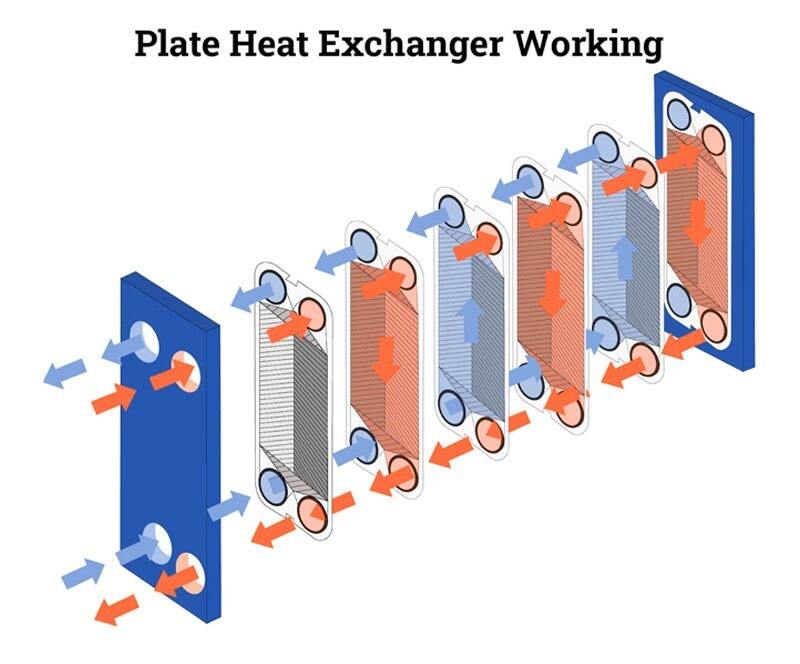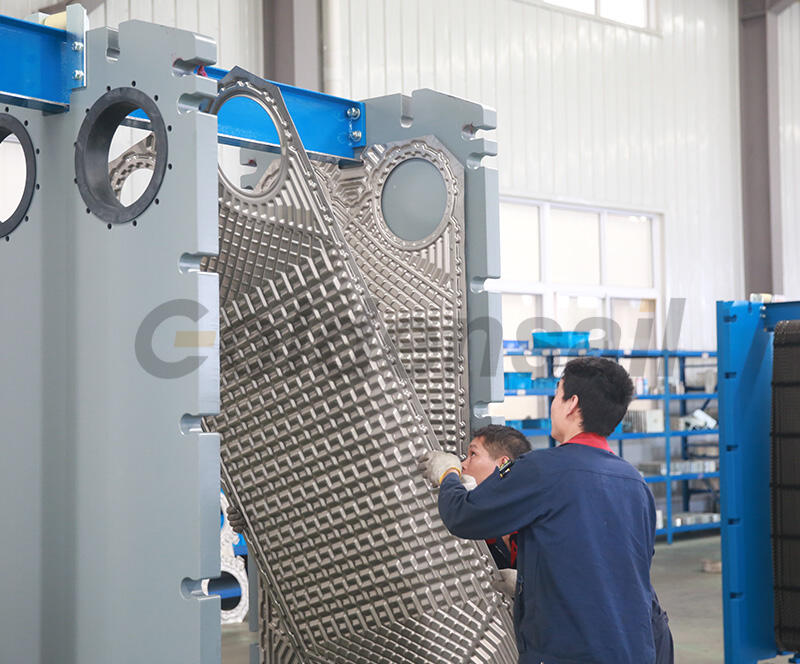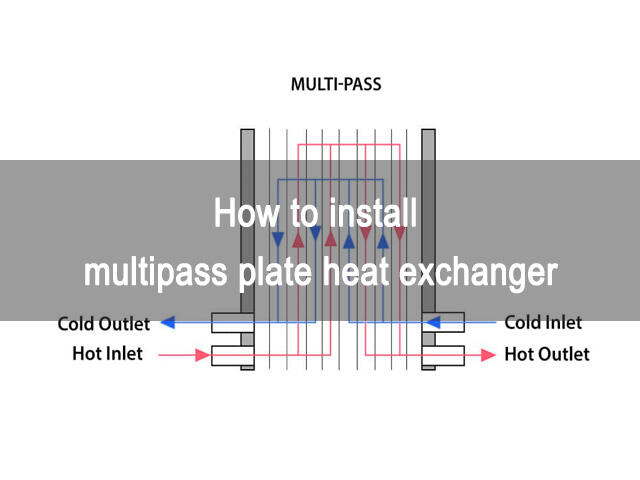
The multipass plate heat exchanger includes Frame Plate, Carrying Bar, Plate Pack, Pressure Plate, Guiding Bar, Support Column and Tightening Bolts. Before connecting any pipes, make sure that all foreign matter in the pipe system of the plate heat exchanger has been cleaned and no air is left. The anchor bolts have been tightened and the equipment has been fixed to the foundation. Make sure there is enough space on one side of the equipment to remove the heat exchanger plates. If the surface temperature of the plate heat exchanger is expected to be too high or too low during operation, isolate the plate heat exchanger to avoid personal injury.
Installation steps
✅ Determine the inlet and outlet of the fluid according to the drawings provided by the manufacturer, ensure the correct flow direction, and use a filter at the inlet
✅ Check the seals before tightening to ensure that all gaskets are correctly aligned and there is no visible misalignment
✅ Inject the fluid slowly to prevent pressure surges. Before full operation, perform a pressure test to check for leaks
✅ During the initial operation, check the equipment regularly to ensure normal operation
✅ Perform a thorough risk assessment before each handling of the packaged equipment
Maintenance
✅ Clean the plates regularly depending on factors such as the type of media and operating temperature
✅ After long-term use, the rubber gaskets may need to be replaced

